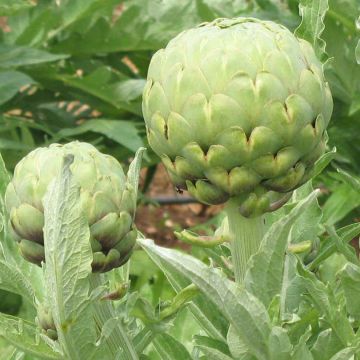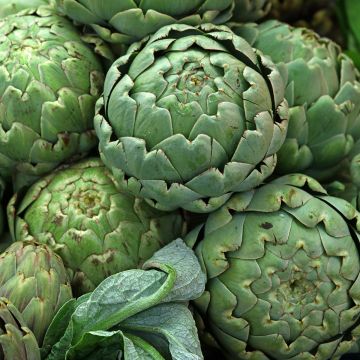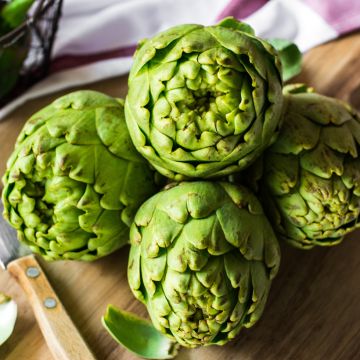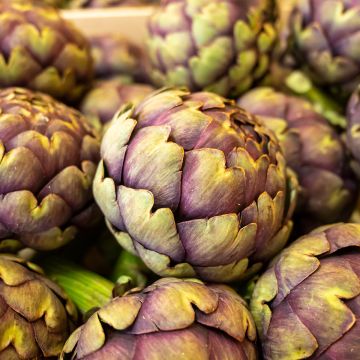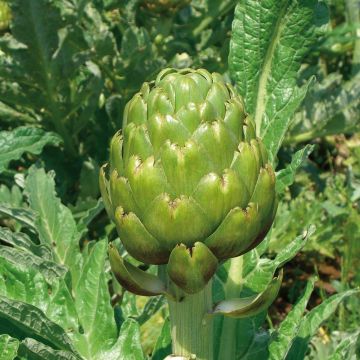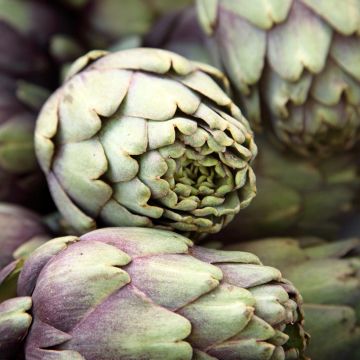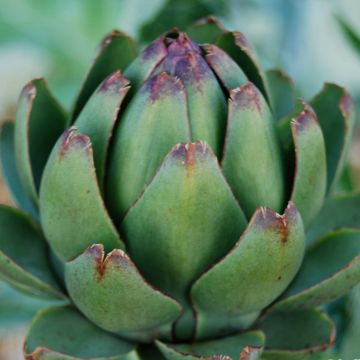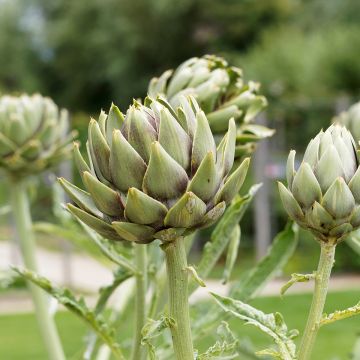
Succeeding in growing artichoke
Sowing, planting, maintenance
Contents
Artichokes are delicious and nutritious vegetables that can be used in a variety of dishes. However, growing artichokes may seem daunting for beginners, with specific requirements regarding soil, climate, and care. In this advice sheet, discover all the information you need to successfully grow artichokes, from soil preparation to harvest, including planting and maintenance.

Location and soil
Artichoke is a perennial vegetable plant with significant growth, which settles in the garden for several years: reserve an appropriate space for it in the vegetable patch. It pairs well with legumes (broad bean, bean, pea), as they provide it with nitrogen, which it craves.
Artichoke thrives in the sun: direct exposure to sunlight for at least six hours a day is recommended. It is also important to protect the plants from strong winds that can damage the leaves and stems.
It prefers mild climates, as it fears severe frosts; it is therefore grown in temperate climates, with warm summers and mild winters. Its cold resistance is variable: resistant down to -5°C, the varieties ‘Green Globe’ or ‘Gros Vert de Laon’, are a bit hardier than ‘Violet de Provence’, grown in the south. However, if you wish to grow it in a colder climate, effective protection against frost will be necessary during the winter months.
It requires well-manured soil, previously enriched with an application of compost or well-rotted manure, 3 to 4 kg per m². It dislikes moisture and is grown on mounds in heavy soil.

Read also
Succeeding in growing artichokeA single sowing and a single planting
Artichokes are generally established from young plants that you prepare yourself or purchase. Direct sowing is possible, but it is rarely practiced and is mainly reserved for the south of France.
- Sowing in buckets is done at home or in a heated shelter, in spring, from February to March: seeds are sown 2 or 3 in a bucket, keeping only the best young plant for planting out about 2 months after sowing. The young plants are permanently installed in the soil at a distance of 80 cm to 1 metre between each plant.

- You can sow directly in place in the Midi, in clusters spaced 80 cm to 1 m apart.
- Planting can take place in spring or autumn. It is done in prepared soil: weeded, loosened, and then raked to obtain fine soil. If your soil retains water, we recommend forming a mound to improve drainage and adding a bit of sand to the soil.
Discover other Artichoke seeds
View all →Available in 1 sizes
Available in 1 sizes
Available in 1 sizes
Available in 1 sizes
Available in 1 sizes
Available in 1 sizes
Available in 1 sizes
Available in 1 sizes
A cultivation that requires occasional watering and winter protection.
The regular maintenance of the artichoke involves carrying out weeding, hoeing, and watering, which should be regular but moderate. These operations can be spaced out or significantly reduced if you mulch the soil with fine, successive layers of dried grass clippings or dead leaves, for example.
Naturally frost-sensitive, the artichoke must be protected during winter: a thick layer of straw or dead leaves may suffice in mild climates. In regions with harsh winters, enhance the protection by placing a winter cover.
→ Find all our tips on how to protect the artichoke from the cold.
Pests and potential diseases
Artichokes are traditionally preyed upon by aphids. To eliminate them, spray with water mixed with black soap (20% dilution) or an organic insecticidal: pyrethrum.
The most common diseases are fungal (caused by a fungus): these include downy mildew and ramularia. To prevent them, maintain proper planting distances. Regularly monitor the foliage and spray with a Bordeaux mixture solution in case of an infestation.
Harvest of the artichoke
Harvesting takes place from May to August: artichokes are picked when the bracts on top of the head begin to open. This is done simply with a knife, cutting 10 cm below the head. The unharvested inflorescences provide a very ornamental flowering, so don’t miss out on them.

- Subscribe!
- Contents






























